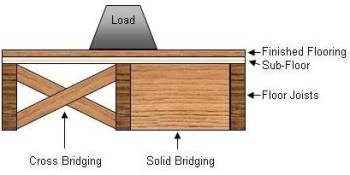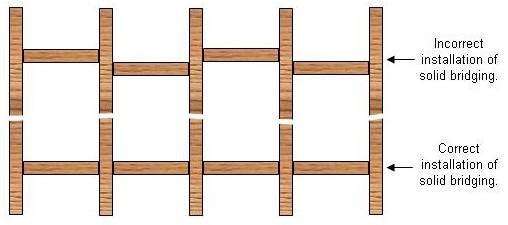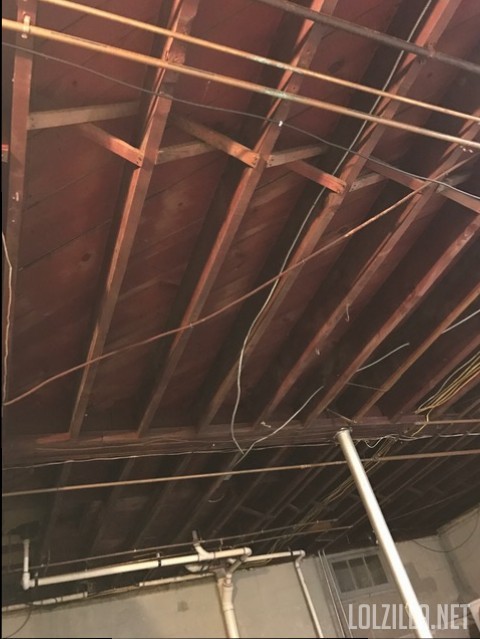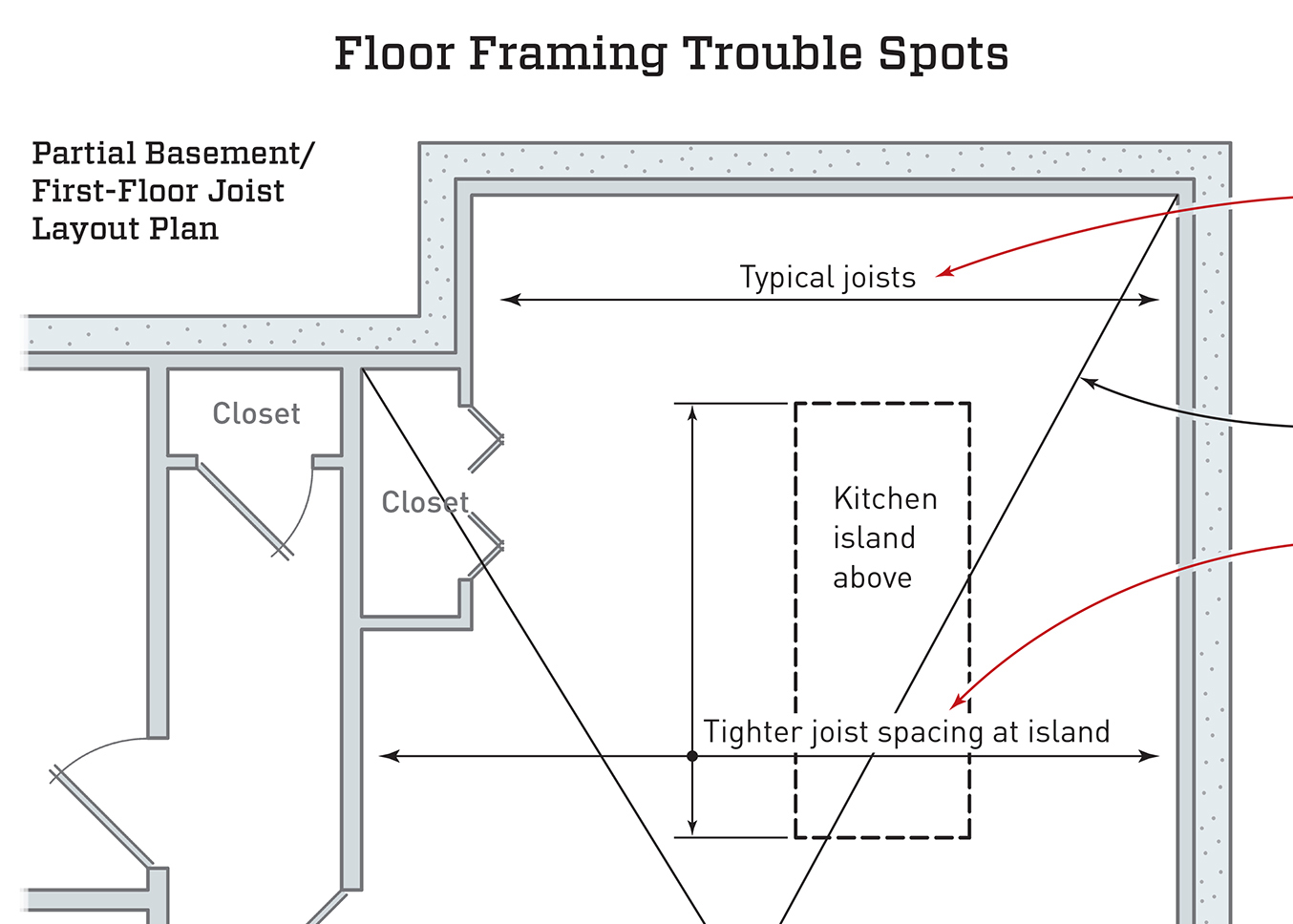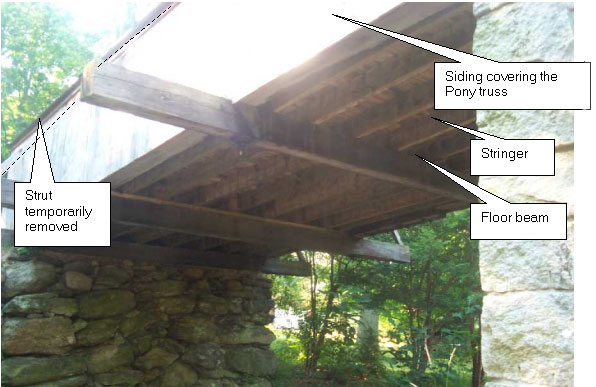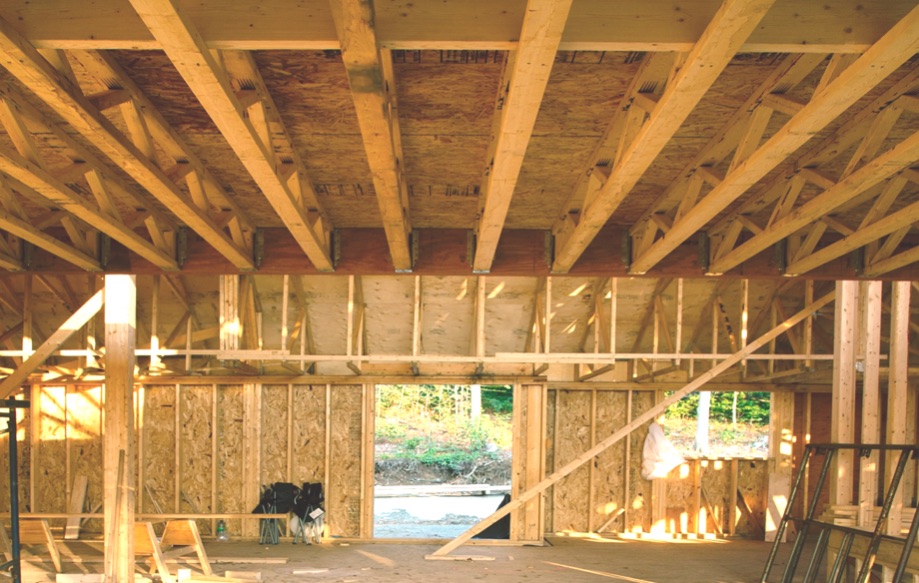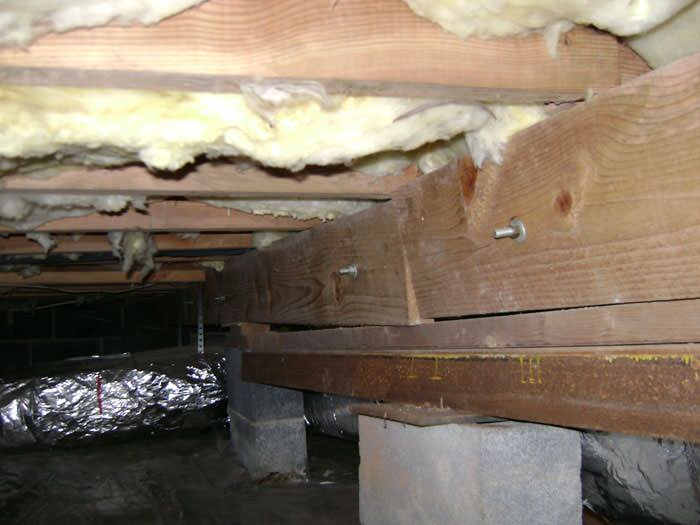Improper Bridging Between Floor Joists

Yet it is not uncommon to find bridging not properly installed or missing all together.
Improper bridging between floor joists. Blocking is also needed each time the joist overlaps with a center beam and every eight feet between two joists. Floor joist bridging is critical to the structural strength of a floor as shown in figure 1. Adding two rows of bridging costs a few dollars per joist. The joists shown here for example span 12 ft so we added rows of bridging 4 ft.
But larger is not always better when builders are constructing a home or adding a room addition. Various types of metal bridging are available at home centers and lumberyards. The blocking or bridging between joists or rafters also contributes to this phenomenon. Solid blocking and metal or wood x type bridging do accomplish the same task.
From both ends of the span. Building code requires the use of blocking for floor joists that exceed 2 inches in width by 12 inches in depth. For example with bridging installed between joists a piano leg sitting over one 2 10 is actually supported by several. Install with two 6d common nails per end.
Common sense tells you that large floor joists can carry more load and spacing joists closer together also increases the load bearing capacity of a floor. The extra two inches of vertical distance when a floor is framed with 2 x 10 joists rather than 2 x 12s can be quite important for example. From a structural perspective you are correct. Simpson strong tie tension bridging galvanized steel the ltb s are used in floor systems to resist the overturning of floor joists and features a staggered nail pattern.
Additional support for the floor joists is achieved by nailing the ends of the joists into headers. Section r502 10 of the international residential code states that header joists can be the same size as the floor joists when the header joist span isn t greater than 4 feet but if the header joist span is more than 4 feet you ll need to double the header joist and ensure that it s capable of. How to make floor joists stronger. Proper bridging distributes the load on the floor to other joists and over time prevents floors from sagging and squeaking do to floor joists twisting and warping.
After several centuries of service floor joists in older homes may sag or crack. To install the type shown here drive the toothed end into the joist and nail the other end.

